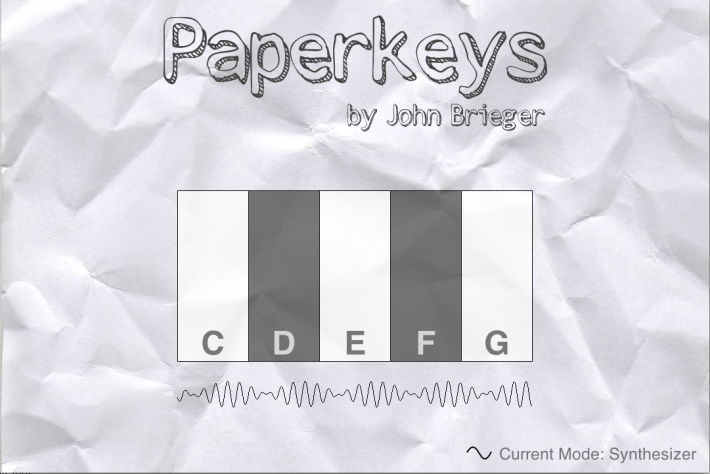Paperkeys
Project Overview:
Paperkeys is a DIY kit for children ages 8-13 that teaches basic circuitry and music skills. I created Paperkeys in the Summer of 2012 for the Greylock University Hackfest, a 24 hour coding competition featuring the top student talent from Bay Area tech companies. During the allotted time, I developed both a physical hardware prototype / template and an accompanying synthesizer software. The kid-safe, no-solder design is based on educational Media Lab research headed by Leah Buechley.
Design Overview:
Paperkeys comes as a paper cut’n'fold template. The basic assembly process is shown in the gif below:

The on-screen software displays a visualization of the keyboard, highlighting keys as they are pressed. Below the keyboard is a small visualizer showing the waveform being generated. Paperkeys performs realtime sound synthesis using the Minim library. As it is not playing pre-recorded notes, but actually doing realtime synthesis, Paperkeys has really great chord sounds and can be used to teach some simple music theory. Paperkeys also allows you to switch between three synthesizer modes: Synthesizer, Piano, and Organ.

The keyboard works by a simple circuit: Each key’s corresponding sensor is pulled high normally, but is pulled low to ground when pressed down. Copper Tape forms all the connections, and an Arduino Uno reads the input and sends it serially over USB to the synthesizer.
